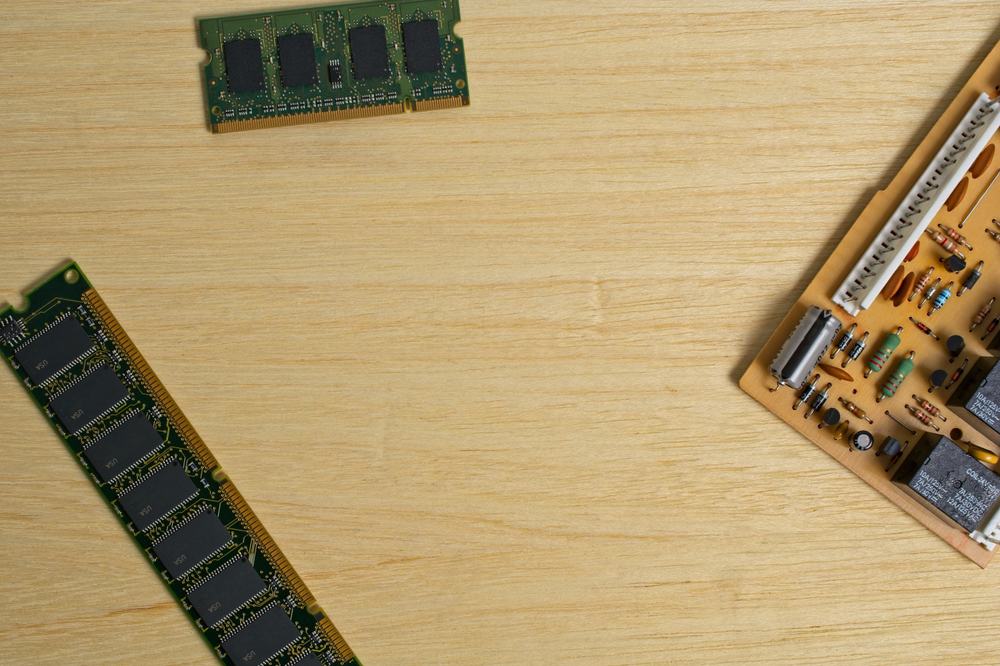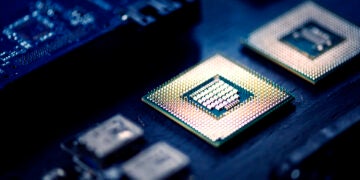
According to signal processing, an electronic circuit can be classified into two categories: integrated circuit (IC) and discrete circuit. ICs have made the miniaturization of gadgets possible. Nowadays, you will find them in almost all devices, such as cars, televisions, and cell phones.
However, there is still a healthy demand for discrete RF/microwave components against ICs for several reasons. Thus when it comes to discrete components vs integrated circuits, understanding the advantages and disadvantages of each type would help you make an easy decision for future projects.
Discrete Circuits – A Brief Summary
We call it a discrete circuit when basic electronic components are connected through a wire or soldered on a printed circuit board (PCB). You can disconnect or replace any component as and when required. However, this arrangement using through-hole components demands ample board space, and the connection is less reliable.
Discrete components can be classified as:
- Active
- Requires power to operate
- E.g., LEDs, transistors, temperature sensors
- Passive
- Requires no power to operate
- E.g., resistors, capacitors, inductors, switches
Advantages
More power
When it comes to solid-state electronics, size defines power. Thus, larger discrete components can produce larger output power levels for a given bias supply. However, there will be room for heat sinks to vent out excess heat away from the circuit.
Better Design Optimization
Discrete components are matched at the board level. For example, you can design a board with impedance matched for transferring maximum power to the load. With discrete devices, there is also flexibility to select PCB materials that maximize circuit performance.
Low Development Cost
The development costs and complexity associated with discrete circuits are much lower compared to ICs. Therefore, a sizeable final application market is essential to provide a reasonable ROI in ICs. However, discrete components can be etched directly into layers of silicon without going through a complex process, unlike ICs. Thus, it is even highly sought-after for low-budget designs and prototypes.
Disadvantages
Complex Routing
While using active discrete packages, you must take care of several traces to meet clearance and spacing requirements. It makes routing very dense and complex. Similarly, active discrete components also require separate power and grounding to process signals.
Less Reliable
As components are manually soldered, there are possibilities of solder bridge, excessive solder, solder balling, cold/overheated joints, tombstoning, etc. Bad solder joint behavior can increase circuit resistance leading to unreliable performance.
Not Compact
Discrete components are not meant for miniature designs. Unlike ICs that host thousands of components onto a single chip, discrete circuits have space restrictions and are bulky and heavy.
EMC Issues
Routing and component placement are essential in determining EMC (electromagnetic compatibility) against unwanted noise, otherwise known as EMI (electromagnetic interference). As routing is denser and complex in discrete components, the circuit is prone to EMI. Passive discrete components involving caps, coils, and transformers are also regarded as the major sources of EMI.
Integrated Circuits – All that You Want to Know
It is a semiconductor wafer (chip/microchip) housing thousands of miniature active and passive components and their interconnections to form a complete circuit. An IC can be designed to function as an amplifier, oscillator, gate, flip flop, counter, or microprocessor. Depending on the nature of the input signal, ICs can be further divided into two categories:
- Linear ICs
- Input signal is continuous type (AC)
- Output is a linear function of input
- Examples: Op-Amps, voltage regulators, comparators, timers
- Mostly used in audio frequency and radio frequency amplifiers.
- Digital ICs
- Input signal is digital type
- Operate on discrete signal with logic gates as basic building blocks
- Examples: logic gates, flip flops, counters, microprocessors
- Used in a lot of low-power and compact design applications
Advantages
Compact Board Space
The size of a typical IC is 1mm by 1mm. Thus, using ICs reduces the circuit’s size and weight. This feature is essential for designing compact devices such as cell phones, laptops, micro ovens, etc.
Increased Reliability
More than compact design, reliability is the major deciding factor concerning discrete components vs integrated circuits in most cases. Unlike discrete circuits, there is no soldering involved. Instead, all connections occur through metal deposition and are encapsulated against mishandling, vibration, and corrosion. Furthermore, the entire process is automated and carried out inside a controlled atmosphere – minimizing human errors.
Control Over Device Geometry
A discrete circuit is a board-level design, and you must rely on available devices. For instance, you can use resistors in available values or in combination (series/parallel) to achieve the desired configuration. However, in ICs, you can design the circuit’s geometry to generate any value you need.
Low Cost
Since hundreds of identical circuits can be built simultaneously on a single wafer, the cost is reduced. Though the process demands a costly high-end setup, the development cost decreases as the scale of integration increases. Moreover, mass production is easier and less laborious than discrete circuit design.
Power Consumption
ICs are manufactured using advanced technologies such as CMOS that enable them to consume power only in the active state. Thus, ICs have improved power management options that aid small designs.
Disadvantages
Large Values Impossible
Discrete designs can accommodate any large value resistor or capacitor without hampering system performances. However, it is impossible in ICs. We can use capacitors less than 100 pF and would aim to replace resistors with transistors for space constraints.
Not Breadboard-Friendly
Unlike discrete designs, it is not economically advisable to make some quick design changes to see how the circuit performs live. Instead, you have to depend on simulations before production begins essentially.
Discrete Components vs Integrated Circuits – A Quick Comparison
| Integrated Circuits | Discrete Circuits |
| Chip level design | Board level design |
| All in single chip | All are separate discrete components |
| Requires less space due to smaller size | Requires more space |
| Cheaper due to mass manufacture | Costlier due to individual components |
| More reliable due to specific construction | Less reliable |
| Impossible to modify parameters | Possible to modify parameters |
| Manufactured for specific applications having specific circuits | Can be used for any circuit |
| If any part of the IC is defective, the entire IC has to be replaced | Only particular defective component requires replacement |
For discrete components vs integrated circuits, go for the former if you need more output power at a low cost without space constraints. On the other hand, if you need a compact design for low-power processing systems, ICs would do better. Nowadays, electronic devices also feature discrete circuits and ICs to meet complex project requirements, known as hybrid designs. Again, you can take help from your electronics manufacturer for better suggestions.
Meanwhile, if you need a free PCB CAD library to build products better, faster, and more accurately with easy access to vendor-verified symbols, footprints, and 3D models, Ultra Librarian would be your ideal bet. Working with Ultra Librarian sets up your team for success to ensure streamlined and error-free design, production, and sourcing. Register today for free.








